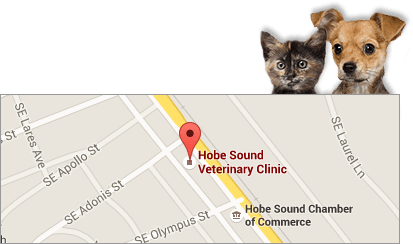Aside from protecting the sofa legs from your puppy’s incessant chewing, there’s not a whole lot to do while your new pet is going through the teething process. Knowing the details of teething is a good idea, though. That way, you know what your puppy is going through and when, and you can let your vet know right away if something seems amiss.
Newborn Puppies
Just like human babies, puppies are born with no teeth. They don’t need them at this stage, after all—your puppy will suckle milk from their mother if the mother is around, or they’ll need to be hand-fed from a bottle if the mother isn’t available.
2-3 Weeks of Age
Around two or three weeks of age, your puppy’s first baby teeth will start coming out of the gums. The smaller front teeth, called the incisors, are usually the first to appear. The canine teeth will follow—these are the four long fangs. Your puppy’s premolars are the last to appear, and they come in behind the canines near the back of the mouth. When it’s all said and done, your puppy will have 28 baby teeth, which are known medically as the deciduous teeth and are often referred to as the “milk teeth.”
6 Weeks of Age
By the time your puppy is about six weeks old, all 28 baby teeth will probably have come in. Around this time, your pup will be in the process of getting weaned off of the mother’s milk or formula, and they’ll begin eating solid puppy food.
3-4 Months of Age
Around the 12- to 16-week mark, your puppy’s baby teeth will start falling out. The adult teeth come in and simply push the deciduous teeth out of the way, so you may occasionally see a baby tooth on the floor or by your puppy’s water or food bowls. Most often, though, your pup simply swallows the baby teeth as they come out, which is perfectly normal.
6 Months and Older
By the time your dog is six months old, all 28 baby teeth will likely be gone, replaced by 42 adult teeth. Your puppy will now have molars in addition to premolars, which are the largest teeth at the back of the mouth that help with chewing and mashing food.
Our Advice on Understanding the Puppy Teething Process in 2024
What are the signs that a puppy is experiencing discomfort during the teething process?
Signs that a puppy is experiencing discomfort during the teething process include excessive chewing on objects, drooling, and swollen or bleeding gums. Puppies may become more irritable or less interested in eating due to gum pain. You might notice them rubbing their face or mouth with their paws or against furniture. Providing appropriate chew toys can help alleviate discomfort and prevent destructive chewing. If symptoms seem severe or the puppy shows signs of infection, such as persistent swelling or foul odor, consulting a veterinarian is recommended for further advice.
Are there any safe, recommended teething aids or toys for puppies?
Safe, recommended teething aids for puppies include durable rubber toys, soft nylon bones, and frozen treats designed for teething. Rubber toys, like Kongs, provide satisfying chew resistance and can be stuffed with treats to keep puppies engaged. Soft nylon bones are gentle on developing teeth but still effective for relieving discomfort. Frozen treats, such as chilled carrots or commercial teething rings, help numb sore gums. Always choose toys specifically made for puppies to ensure they are appropriately sized and safe. Regularly inspect toys for wear and replace them to avoid choking hazards.
Are there any dietary considerations or changes needed during the teething process?
During the teething process, dietary considerations for puppies include providing softer foods if they experience gum discomfort. Wet puppy food or kibble soaked in water can be easier to eat. Ensure the diet remains balanced and nutritious to support healthy growth and dental development. Avoid hard treats or chews that might exacerbate gum pain. Additionally, offering frozen treats, like chilled carrots or commercial teething treats, can soothe sore gums. Always consult a veterinarian for personalized dietary recommendations and to ensure the puppy’s nutritional needs are met during this developmental stage.
What dental care routines should be established during and after the teething process?
During and after the teething process, establish a dental care routine that includes brushing the puppy’s teeth regularly with a dog-specific toothbrush and toothpaste. Start slowly, allowing the puppy to get used to the process. Offer dental chews and toys designed to reduce plaque and tartar buildup. Regular veterinary check-ups are essential to monitor dental health and address any issues early. Encourage good chewing habits with safe toys, and avoid hard objects that could damage new teeth. Consistent dental care helps maintain oral health and prevent future dental problems.
Is it necessary to keep any fallen baby teeth, and if so, for what purpose?
It is not necessary to keep fallen baby teeth from a puppy. Baby teeth naturally fall out as adult teeth emerge, and this process is normal. However, keeping a few baby teeth can be a sentimental choice for some owners. Monitoring the teething process ensures all baby teeth fall out and do not cause dental issues, such as retained baby teeth, which may require veterinary attention. If any concerns arise during teething, consult a veterinarian to ensure proper dental development and address any potential complications.
Do you have questions about your puppy’s teething? We’re here to help. Call your vet clinic in Hobe Sound, FL today. For more information on comprehensive puppy care, including vaccinations and wellness check-ups during this crucial developmental stage, visit our Veterinary Wellness & Pet Vaccinations page.
Once your puppy has finished teething, it’s a great time to focus on obedience training. For tips on how to get started, check out our Guide to Puppy Obedience Training.




